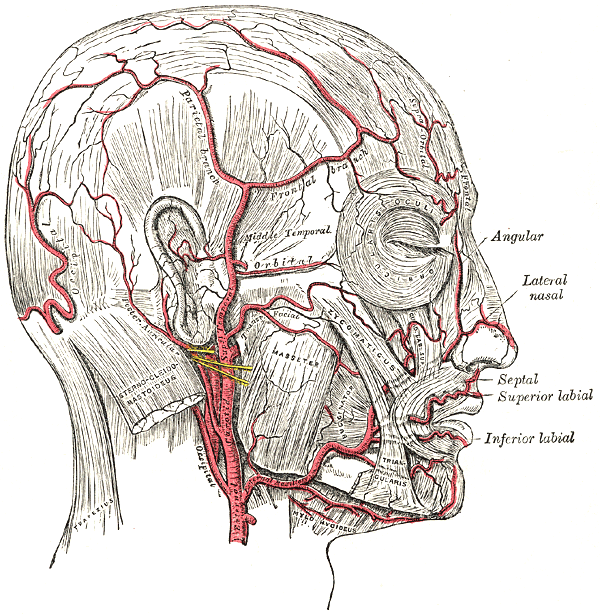Giant cell arteritis;
Overview:
Giant Cell Arteritis (GCA), also known as temporal arteritis, is a chronic inflammatory disease primarily affecting medium and large arteries, particularly those in the head. This condition demands attention due to its potential to cause severe complications if left untreated.

What is Giant Cell Arteritis (GCA)?
GCA or Temporal Arteritis is a vasculitis, a group of disorders characterized by inflammation of blood vessels. In GCA, inflammation typically targets the arteries of the scalp, head, and neck, particularly the temporal arteries.
Causes of Giant Cell Arteritis:
The exact cause of GCA or Temporal Arteritis remains elusive. However, it is believed to involve a combination of genetic predisposition and environmental factors, potentially triggered by an immune response. Key factors that may contribute to its development include:
- Immune Dysfunction: An abnormal immune response is thought to play a central role in the development of GCA.
- Genetic Susceptibility: Certain genetic factors may increase the likelihood of developing Temporal Arteritis.
- Environmental Triggers: Factors such as infections or other environmental stimuli may trigger the inflammatory response seen in GCA.
Signs and Symptoms of Giant Cell Arteritis:
GCA or Temporal Arteritis can present with a variety of signs and symptoms, which may vary from person to person. Common manifestations include:
- Headache: Persistent, severe headaches, often located in the temple area, are a hallmark symptom of GCA.
- Scalp Tenderness: Tenderness or sensitivity over the scalp, particularly over the temporal arteries, may be present.
- Vision Changes: Blurred vision, double vision, or even sudden vision loss can occur due to inflammation of the arteries supplying the eyes.
- Jaw Pain or Jaw claudication: Pain or stiffness in the jaw, especially when chewing, is another common symptom.
- Flu-like Symptoms: Fever, fatigue, and general malaise may accompany other symptoms of GCA.
Diagnosis of Giant Cell Arteritis:
Diagnosing Temporal Arteritis requires a thorough evaluation by a healthcare professional. Key steps in the diagnostic process include:
- Medical History and Physical Examination: Your doctor will inquire about your symptoms and conduct a physical examination, paying particular attention to signs such as scalp tenderness and swollen arteries.
- Blood Tests: Blood tests, including erythrocyte sedimentation rate (ESR) and C-reactive protein (CRP) levels, may be elevated in GCA due to inflammation.
- Imaging Studies: Imaging tests such as ultrasound or magnetic resonance angiography (MRA) may be performed to visualize the arteries and assess for signs of inflammation.
- Temporal Artery Biopsy: A biopsy of the temporal artery may be recommended to confirm the diagnosis by examining the artery under a microscope for characteristic inflammatory changes.
Treatment of GCA:
Early diagnosis and prompt treatment are crucial in managing Temporal Arteritis and preventing complications. Treatment typically involves:
- Corticosteroids: High-dose corticosteroids, such as prednisone, are the mainstay of treatment for GCA to reduce inflammation and prevent further damage to the arteries.
- Immunosuppressive Therapy: In some cases, additional medications to suppress the immune system may be prescribed, particularly for individuals who cannot tolerate high doses of corticosteroids or who experience recurrent flares.
- Regular Monitoring: Close monitoring by healthcare professionals is essential to assess treatment response, manage side effects of medications, and monitor for complications.
Complications of GCA:
If left untreated or inadequately managed, Temporal Arteritis can lead to serious complications, including:
- Vision Loss: Untreated GCA can cause permanent vision loss due to damage to the arteries supplying the eyes.
- Aortic Aneurysm: Inflammation of the aorta, the body’s main artery, can lead to the formation of aneurysms (weak spots in the artery wall) or dissections (tears in the artery wall), increasing the risk of life-threatening complications such as aortic rupture.
- Stroke: Inflammation of the arteries supplying the brain can increase the risk of stroke in individuals with GCA.
Summary:
Giant Cell Arteritis is a serious condition that requires prompt recognition and appropriate management to prevent potentially devastating complications. With early diagnosis and effective treatment, individuals with GCA can often achieve remission and minimize the risk of long-term complications, highlighting the importance of timely intervention in this silent but formidable threat.
Read Another Article: Health Benefits of Fenugreek seeds


Pingback: Home - AcconstHost
Pingback: Home - Health Google
Pingback: Home - ECG Oxford